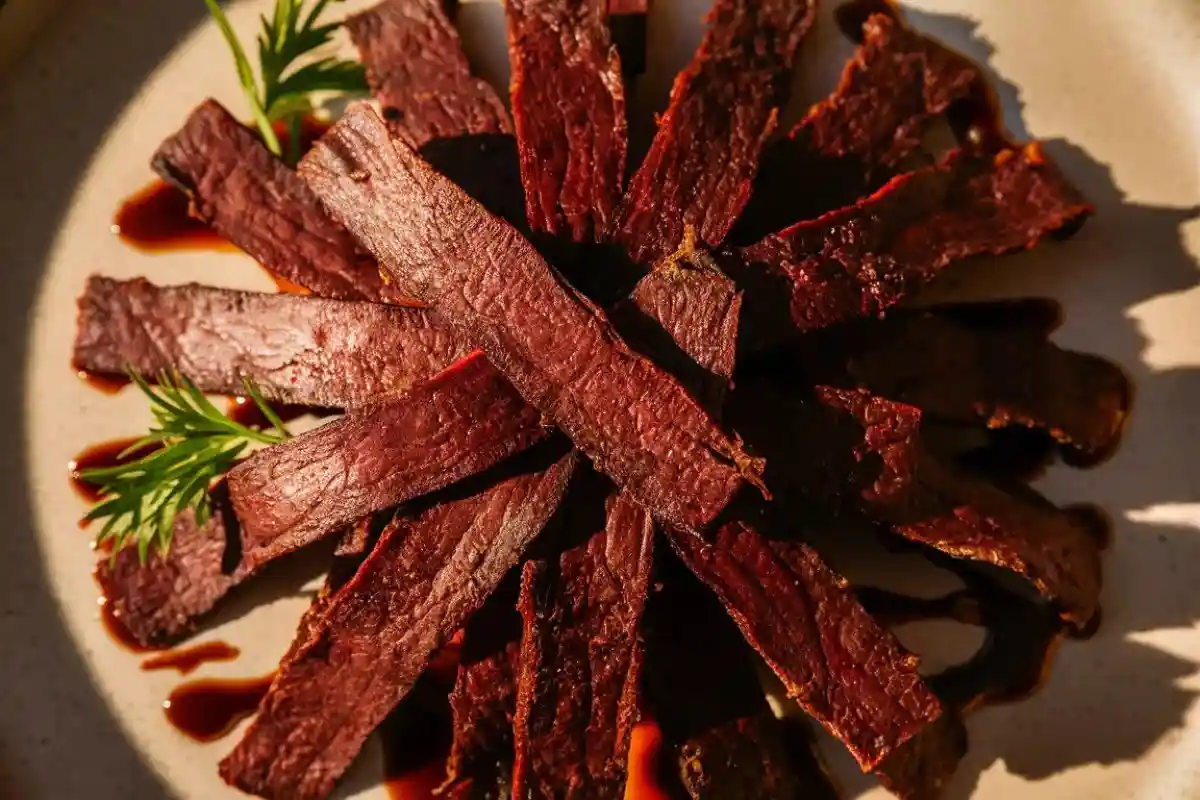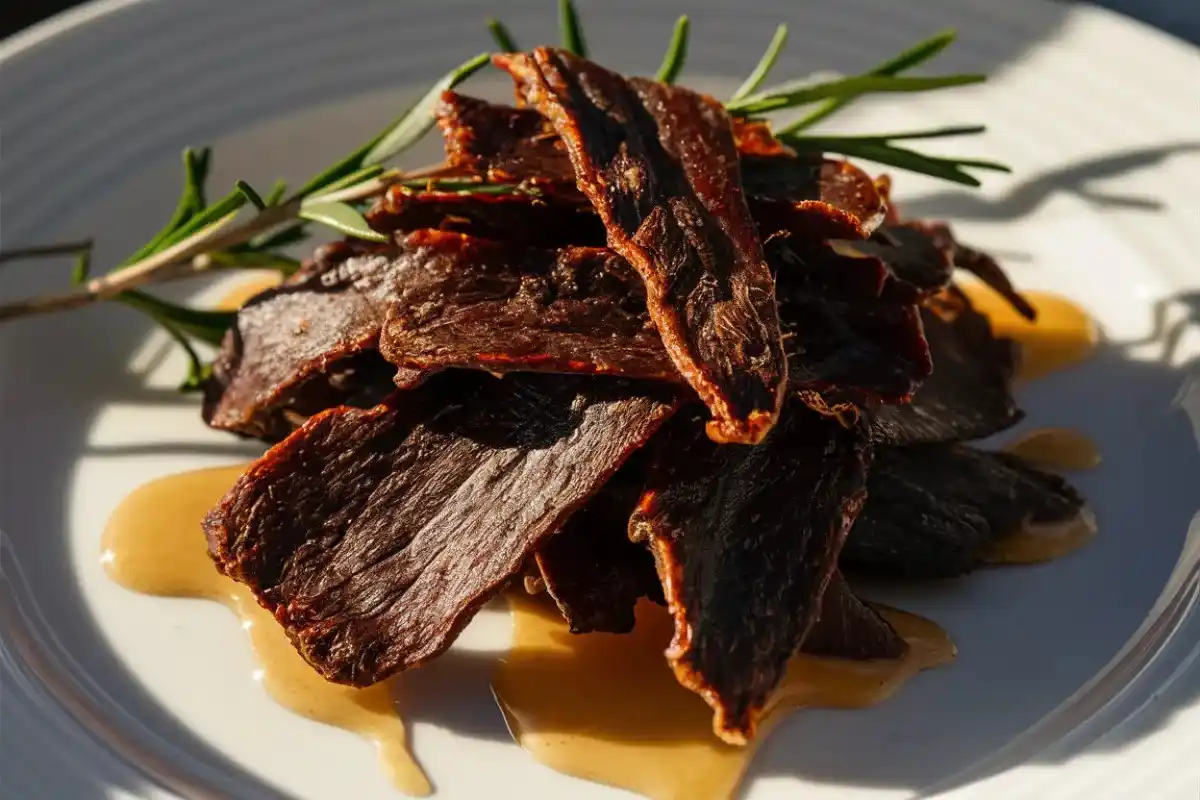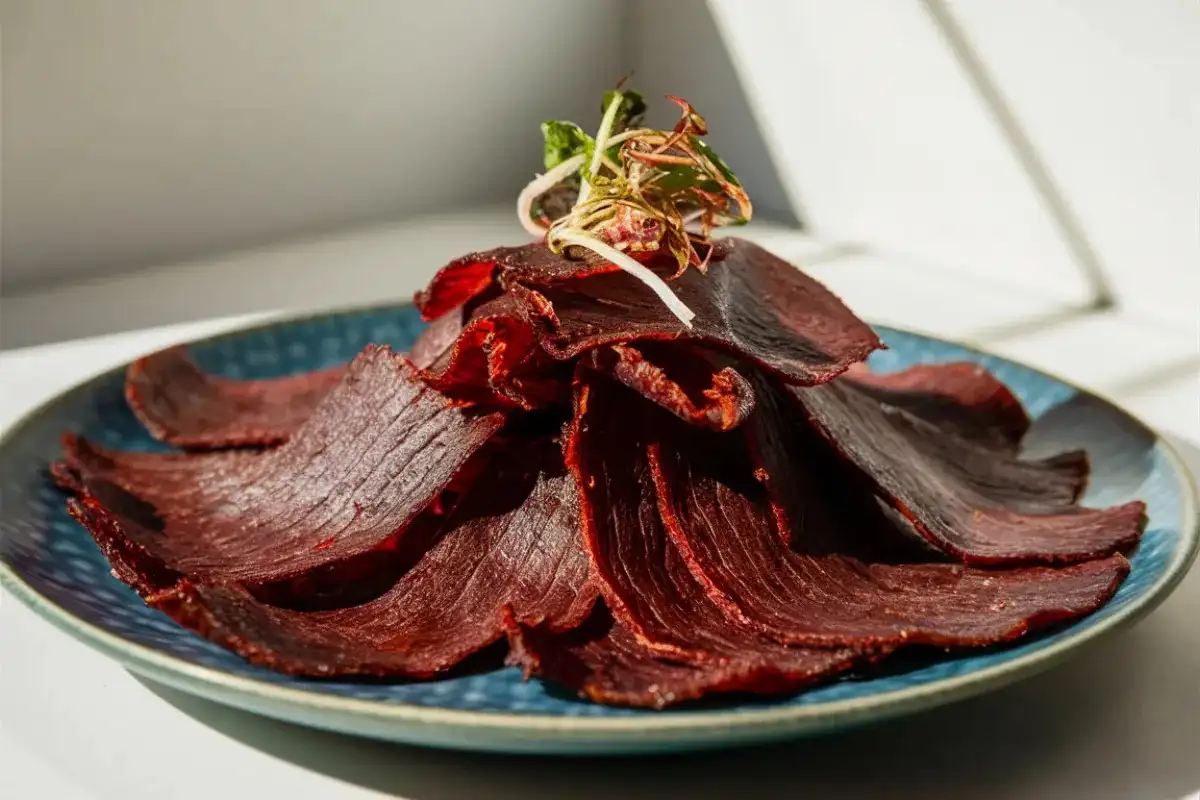Beef jerky, a popular snack known for its long shelf life, is often chosen for its portability, convenience, and ability to stay fresh for extended periods. But the question of whether it is okay to eat expired beef jerky frequently arises. Understanding the nuances of expiration dates, identifying signs of spoilage, and knowing the best practices for storing jerky can help ensure that you enjoy this savory treat safely.
What Does “Expired” Mean for Beef Jerky?
When talking about beef jerky, the term “expired” can be somewhat misleading. Unlike perishable items like dairy or fresh produce, beef jerky is made to last. Many jerky packages have a “best by” date rather than a strict expiration date. The “best by” date refers to the period during which the jerky is at its peak quality — meaning the best flavor and texture. This does not necessarily mean that the jerky is unsafe to eat after this date.
According to the Food Safety Government, the “best by” date is primarily about quality. Meanwhile, a “sell by” date is more for retailers to manage inventory, and the “use by” date is the last date recommended for the product to retain its optimal quality. For beef jerky, the best by date indicates when the jerky will be at its best, but it can often be consumed safely beyond this date if it shows no signs of spoilage.
To explore how long different types of jerky last, check out the guide on how long beef jerky lasts.
Factors Influencing the Shelf Life of Beef Jerky

Several factors influence how long beef jerky lasts unopened and whether it remains safe to eat past its best by date. Understanding these factors is key to determining whether your jerky is still good to eat and answering the question: is it okay to eat expired beef jerky?
1. Preservation Methods Used
Beef jerky undergoes various preservation techniques to extend its shelf life:
- Dehydration: The primary method of preserving beef jerky is through dehydration, which involves removing moisture from the meat. Moisture is what allows bacteria to grow, so removing it helps prevent spoilage. The dehydration process gives beef jerky its long shelf life by creating an environment where bacteria cannot thrive.
- Curing: Jerky is often cured with salt, which acts as a preservative. Salt draws moisture out of the meat and inhibits the growth of bacteria, mold, and other microorganisms that cause spoilage. This method further extends the shelf life of beef jerky, ensuring it remains edible for a longer period.
- Smoking: Smoking jerky adds flavor and acts as an additional preservative. The smoke from wood chips contains antimicrobial compounds that help prevent the growth of bacteria on the surface of the meat. While not all jerky is smoked, this process can enhance both flavor and longevity.
2. Packaging and Storage Conditions
The way jerky is packaged and stored plays a critical role in how long it lasts:
- Vacuum-Sealed Packaging: Many commercially-produced beef jerkies are vacuum-sealed, a method that removes air from the packaging. This reduces the amount of oxygen that comes into contact with the meat, which helps to prevent oxidation and spoilage. Oxygen is one of the key factors that can cause food to go bad, so vacuum sealing significantly extends the shelf life of beef jerky. For more information on proper storage methods, you can read about long-term storage options for beef jerky.
- Airtight Packaging: Even if jerky is not vacuum-sealed, airtight packaging helps prevent air and moisture from entering. This type of packaging is especially important for homemade jerky, which may not contain the same preservatives as store-bought versions.
- Cool, Dry Storage: Storing beef jerky in a cool, dry place, such as a pantry or cupboard, is essential to maximize its shelf life. Heat and humidity can accelerate spoilage by encouraging bacterial growth and causing the fats in the meat to oxidize. Learn more about the importance of proper storage to extend the shelf life of dried meats.
3. Ingredients in Beef Jerky
The ingredients used in making beef jerky also affect its shelf life:
- Natural Preservatives: Many beef jerkies use natural preservatives like salt and vinegar to extend their shelf life. These ingredients help prevent bacterial growth and can significantly prolong the freshness of the jerky.
- Added Sugars and Spices: Some jerkies contain added sugars, honey, or a variety of spices to enhance flavor. While these ingredients contribute to the taste, they can also affect shelf life. Sugar, for example, can draw moisture from the environment, which may reduce the jerky’s longevity.
- Moisture Content: Jerkies with a higher moisture content, such as those that are marinated or flavored with sauces, tend to have a shorter shelf life compared to those that are fully dried. These products are more susceptible to mold and bacterial growth if not stored correctly.
Common Signs of Spoilage in Expired Beef Jerky
Even though beef jerky has a reputation for lasting a long time, it’s essential to check for signs of spoilage before consuming jerky that has passed its best by date. But is it okay to eat expired beef jerky if it looks fine? Here are some indicators that the jerky might not be safe to eat:
- Mold: One of the most obvious signs of spoilage is the presence of mold. Mold can appear as white, green, or black spots on the jerky’s surface. Mold indicates that moisture has somehow penetrated the packaging or the jerky was not properly dehydrated. If you notice any mold, it is best to discard the jerky immediately.
- Discoloration: Beef jerky should maintain a consistent color. If you notice significant darkening, fading, or any other color changes, it could be a sign that the jerky is no longer safe to eat. Discoloration might occur due to exposure to air or improper storage conditions.
- Off Smell: Fresh beef jerky has a distinctive, pleasant aroma. An off or rancid odor is a strong indication that the jerky has spoiled. If the jerky smells sour, musty, or has a strange odor, it is best to err on the side of caution and discard it.
- Texture Changes: Spoiled jerky may feel slimy or greasy, which can indicate bacterial contamination. It might also be unusually hard or brittle, which could result from improper dehydration or storage. If the texture feels different from when you first purchased it, it could be a sign that it has gone bad. For more detailed guidance on recognizing spoilage, see how to tell if beef jerky is bad.
Does Beef Jerky Really Expire?

The question of whether beef jerky truly expires is more complex than it seems. While jerky does not expire in the same way fresh meat or dairy products do, it does have a finite shelf life. Beef jerky is designed to last for extended periods because it is dried, cured, and sometimes smoked. These processes help preserve the meat by removing moisture and creating an environment where bacteria and mold are less likely to grow.
However, over time, even jerky can degrade in quality. While it might not become unsafe immediately after its best by date, its texture can become tougher, and its flavor may diminish. The longer jerky is stored, the more its quality will decline, but this does not mean it is always unsafe to eat. Proper storage and handling play a crucial role in maintaining the quality of jerky over time. For more insights into shelf life, you can check the shelf life of common foods.
How to Check If Expired Beef Jerky Is Still Safe to Eat
If you have beef jerky that is past its best by date and you are considering eating it, here are some steps to help determine if it is still safe:
- Visual Inspection: Carefully examine the jerky for any visible signs of spoilage, such as mold, discoloration, or unusual texture. If you see any of these signs, it’s best to discard the jerky.
- Smell Test: Give the jerky a sniff. If it has a sour, musty, or rancid odor, it is likely spoiled and should not be consumed.
- Check Packaging Integrity: Look at the packaging for any tears, holes, or other signs that air or moisture may have entered, which could lead to contamination.
Safe Practices for Consuming Beef Jerky After Expiration
If you decide to consume beef jerky past its expiration date, here are some guidelines to minimize risk:
- Consume Small Amounts First: Start by trying a small piece to check for any off flavors or unusual textures. If it tastes fine and shows no signs of spoilage, it may still be safe to eat.
- Rehydrate or Cook the Jerky: If the jerky is very dry, you might consider rehydrating it in hot water to restore some of its texture. Cooking the jerky in a skillet or oven can also help reduce the risk of bacteria by killing potential pathogens.
- Store Opened Jerky Properly: Once opened, store jerky in airtight containers or resealable bags to prevent moisture from causing spoilage. For long-term storage, you might consider using a vacuum sealer to keep it fresh.
Best Storage Methods to Extend Beef Jerky Shelf Life
To ensure that beef jerky stays fresh for as long as possible, follow these best storage practices:
- Use Vacuum-Sealed Bags: Vacuum-sealed bags remove air from the packaging, which helps prevent oxidation and the growth of bacteria. This method is highly effective in extending the shelf life of beef jerky.
- Store in a Cool, Dark Place: Keeping jerky in a pantry or cupboard away from sunlight and heat sources helps prevent spoilage. Light and heat can degrade the quality of the jerky, causing it to spoil faster.
- Refrigeration and Freezing: If you want to extend the freshness of your beef jerky even further, consider refrigerating or freezing it. While freezing may slightly alter the texture, it can significantly prolong the shelf life by several months.
Myths and Misconceptions About Expired Beef Jerky

- Beef jerky lasts forever due to dehydration.
Fact: While dehydration extends shelf life, jerky can still spoil over time if exposed to air, moisture, or improper storage conditions. - All beef jerky has the same shelf life.
Fact: The shelf life of jerky can vary significantly depending on the ingredients, packaging, and storage methods used. - Visible mold on jerky is always safe to remove and eat.
Fact: Mold on jerky indicates contamination, and such jerky should be discarded immediately. - Expired jerky is always dangerous to consume.
Fact: Expired jerky may still be safe to eat if it has been stored properly and shows no signs of spoilage.
Frequently Asked Questions About Eating Expired Beef Jerky
1. Can you eat beef jerky after the expiration date?
Yes, you can eat beef jerky after the expiration date if it shows no signs of spoilage, such as mold, discoloration, or an off smell.
2. How long does beef jerky last past the expiration date?
If stored properly in an airtight container and kept in a cool, dry place, beef jerky can last several months past the best by date. However, always inspect it before consuming.
3. What happens if you eat expired beef jerky?
If the jerky is spoiled, it may have an unpleasant taste or texture. It is important to check for visible signs of spoilage and smell before eating.
4. Is it safe to consume jerky with visible mold?
No, it is not safe to eat jerky with visible mold, as mold indicates contamination and could pose health risks.
5. Does freezing beef jerky help extend its shelf life?
Yes, freezing beef jerky can help extend its shelf life, but it may slightly alter the texture. Properly sealed and stored jerky can last up to a year in the freezer.
Conclusion: Should You Eat Expired Beef Jerky?
In conclusion, eating expired beef jerky can be safe, but it depends on how it was stored, its ingredients, and whether it shows any signs of spoilage. Always inspect jerky for mold, discoloration, off odors, and texture changes before consuming it. When in doubt, it is safer to discard the jerky than to risk consuming a product that may not be fresh. By following best storage practices, such as keeping jerky in airtight containers and storing it in a cool, dry place, you can maximize its shelf life and enjoy it for longer periods.
For more tips on storing and extending the life of your jerky, check out beef jerky long-term storage to keep your snacks safe and tasty.

